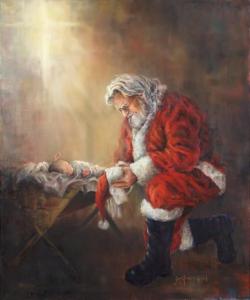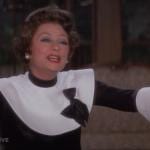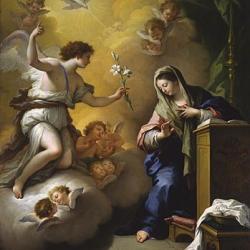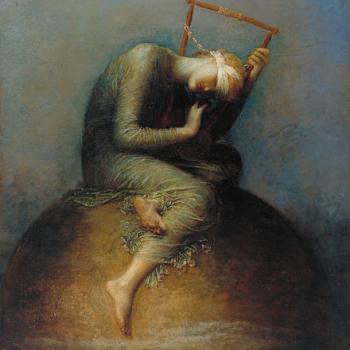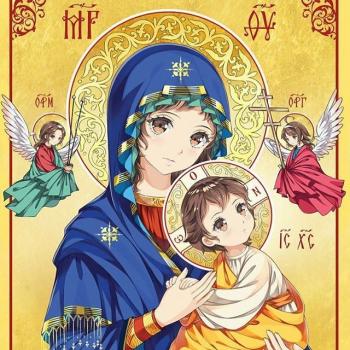“Christmas is the time of year when people of all religions come together to worship Jesus Christ.”- Bart Simpson
Keep Christ in Christmas.
He is the reason for the Season.
This is all very much true. But it’s also true that Christmas was not always widely celebrated in the splendor of all its holiday joy as it is today. In fact, …’’
It was actually illegal to celebrate Christmas in Massachusetts between 1659 and 1681 (the fine was five shillings).
As early as 1621, just one year after the Pilgrims landed on Plymouth Rock, their governor, William Bradford, found some of the colony’s new residents trying to take the day off. Bradford ordered them right back to work. And in 1659 the Massachusetts General Court did in fact declare the celebration of Christmas to be a criminal offense.
-Stephen Nissenbaum, The Battle for Christmas
It’s true that Christians celebrate Christmas, as it is the celebration of the birth of its creator and the savior of all of mankind, Jesus the Christ. But it’s also true that non-religious people also celebrate Christmas. When people go holiday shopping their buying Christmas presents. When kids have a day off from school, and laborers a day off from work for the holiday, it’s on December 25th. The non-religious celebration of the the christmas holiday usually starts before Advent and has a lot of different customs and various traditions that are usually mixed with the religious aspects that Christians hold so dear. Over all Christmas is not just a religious holiday.
While we consider ‘our’ Christmas customs to be the true ones, we – most people in the West today who celebrate Christmas – in reality don’t adhere to ‘our’ customs, but to an amalgam of traditions drawn primarily from the Anglo-American world and the German-speaking lands. These were then shaken up, mixed together with a couple of centuries of newspapers, magazines and books, not to mention a hundred years of radio, film and television, to end up not with one culture’s Christmas, but with something entirely new, a holiday that is recognized across the globe, but comes from nowhere in particular.
Judith Flanders, (2017). Christmas: A Biography
As the secular world gets ready for the arrival of Santa on Christmas Eve, the Christian world gets ready for the symbolic arrival of Christ in Bethlehem 2000 years ago. As society at large stops the non-religious celebration of Christmas at the end of Advent, the Christian world begins the liturgical celebration of Christmas for the next 12 days.
Throughout Christendom, the liturgical privileges of Christmas are second only to those of Easter. In the Greek Church the feast is preceded by a forty-day fast and by five days of fore-feast. In the Latin Church, after four weeks of Advent,22 including the seven days of the ‘O antiphons’, the birthday of the Savior is observed as a Solemnity (or ‘Double of the First Class’, as it was known in the old rite) with three thematically distinct Masses23 and is followed by an octave dense with diverse feasts. The twelve days of Christmas lead from the Nativity to the even more ancient feast of the Epiphany (or ‘Theophany’), which in the West chiefly celebrates the manifestation of the newborn Christ to the Gentiles and in the East the manifestation of the grown-up Christ at His Baptism.
John Saward, Cradle of Redeeming Love (2002) Ignatius Press
But in the older Catholic calendar, before Vatican 2, Christmas went on for even longer than that.
In the older tradition (which is still kept in the liturgical calendar of the Extraordinary Form of the Mass) Christmas lasts until Candlemas, or the Feast of the Purification of the Blessed Virgin Mary and the Presentation of the Lord, which isn’t until February 2nd. This marked the end of a long 40-day “Christmastide” that corresponded to the 40 days of Lent.
On February 2nd the Church celebrates the day that Mary entered the temple with the Child Jesus when her days of purification after giving birth were fulfilled, according to the Mosaic law, and when Simeon made his well-known prophecy about Mary and the Child. It is historically called “Candle-mas” because of Simeon’s prophecy of Jesus being a light for the Gentiles. Today it is better known as the Feast of the Presentation of Our Lord.
Gretchen Filz Does Christmas End on Epiphany? (Jan 06, 2017) Catholic Company
Even thou we wait till after Advent to focus in on the real meaning of Christmas by reading the infancy narratives during the liturgy, Christians still read and enjoy ‘The Night Before Christmas’, and Dicken’s Christmas Carol. Even thou Christians wait to sing Liturgical Christmas carols like Silent Night after Christmas Eve Mass; you can still hear it played in stores and on the radio. And of course, were going to sing along with that and several renditions of Winter Wonderland and Elton John’s Step into Christmas.
Christians don’t totally sidestep the celebration of secular Christmas, which would be practically impossible in our culture without secluding yourself from society like the Amish. Ideally it would be great to be able to celebrate Christmas and Advent the way the church intended us to.
To celebrate Christmas properly, it’s absolutely essential to make the proper preparation: spiritual as well as material. The Advent season builds up naturally toward the explosion of joy on Christmas Day. But when the bright lights go on in early December, Advent fades into the background. It’s hard to maintain that sense of quiet, prayerful anticipation with the sound of “Jingle Bells” echoing constantly through your head.
Phil Lawler Christmas can’t come before Advent (Nov 21, 2019) Catholic Culture
It makes sense to cease the eager arrival of Santa after his night of magical travel has already taken place. He has come and filled the stockings and given his gifts, and now it’s time to for Santa to go and rest and prepare for next year. Even Christians don’t care much about watching Christmas related movies and singing Christmas songs after Christmas day. We’ve been singing and watching since before we sat down to eat Turkey, but not before we have eaten all our Halloween candy.
During Christian Advent and Secular Christmas, we can ponder the pregnant mother and her unborn child.
Reflecting on Mary’s pregnancy can teach us patience and the attitude of joyful expectation that all of us should have as we prepare to celebrate the birth of Jesus and as we wait for his second coming in glory at the end of time. This attitude of joyful expectation should accompany the pregnancy of every woman as we await the birth of her pre-born child. Each child is made in the image and likeness of God no matter what their handicaps or circumstances of conception. Every child deserves a chance to be born and to continue to grow and develop outside the womb. Jesus identifies with the pre-born since he himself was a pre-born child. Jesus went through all the stages of development that we went through. He was a tiny zygote, an embryo, fetus, infant, child, adolescent and an adult. At no time did he become more human. He simply went through different stages of human development as we all did. When Jesus was developing in the womb he was not a potential person.
Fr. Peter West A Reflection on Mary and the Birth of Christ, (January 01, 1998) Priests for Life
But with the arrival of a baby, the ooo and, awe, doesn’t’ dissipate quickly as it does for Santa or Christmas songs that are really winter songs. Or it shouldn’t anyway. Also there is no reason you can’t play Sleigh Ride or Let it snow during a snowstorm in February. You want to linger on and gaze in wonder at the beautiful baby, looking all cute and realizing that the helpless babe born to a woman conceived without original sin and without the help of a man and who was announced by an angel who stands before the face of God, and who is actually God himself, being itself, who created the all the raw material around him, including the crib he’s sleeping in, Ex nihilo.
Nothing wrong with focusing in on Santa, Scrooge, Elves, George Baily, Ralphie, Frosty, and the Grinch during Advent. You can’t escape it.
There is nothing wrong with Christians watching the relevant movies like Elf and Die Hard and listening to the right music like Joy to the World, Here Comes Santa Claus and Do they Know it’s Christmas? during Advent. You don’t have to forget about the bingo-bongos, wassail, eggnog, figgy pudding the Rockettes, white Christmases and mistletoe (“it’s a parasite, you know, it kills the trees”).
It’s even good to chime in and say bravo when Jesus is mentioned. But once Advent is over and Christmas begins, we should remember that it is CHRISTMAS and the celebration of the Christ Child has begun and won’t end for at least 12 days or more.
Happy Advent and Secular Christmas
“If TV has taught me anything, it’s that miracles always happen to poor kids at Christmas. It happened to Tiny Tim, it happened to Charlie Brown, it happened to the Smurfs, and it’s going to happen to us!”- Bart Simpson


